Recent Articles
Popular Makes
Body Types
2017 Buick Encore Road Test and Review
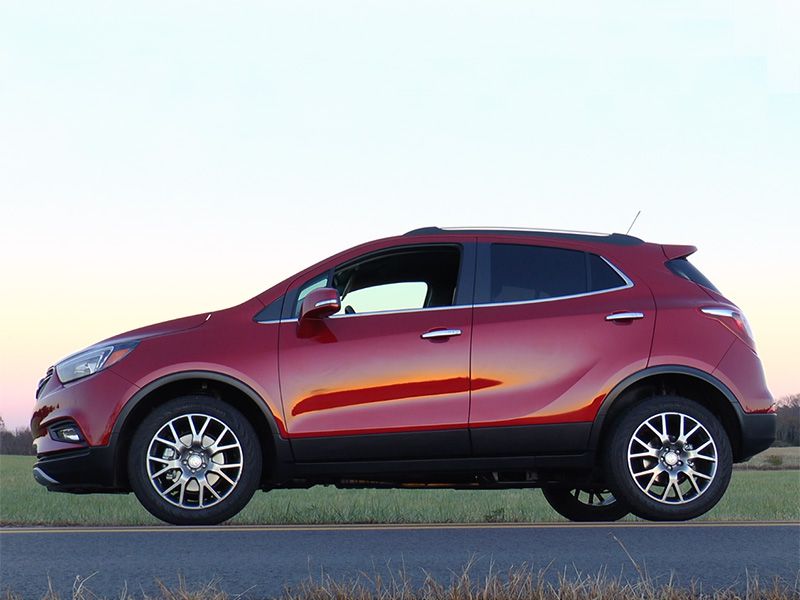
2017 Buick Encore Side Sunset ・ Photo by Dan Gray
2017 marks the Buick Encore’s first refresh, with a bold play for the high end of the compact crossover/SUV class. The Jeep Renegade is the best-selling mainstream subcompact crossover year-to-date in 2016, followed by the Subaru XV Crosstrek and Honda HR-V, with the Chevrolet Trax and Encore nipping at the HR-V’s heels. From there, it’s a significant drop to the Mitsubishi Outlander Sport, Nissan Juke, Mazda CX-3, MINI Countryman, and Fiat 500X. While the Encore aims for entry-level luxury and outsells the BMW X1, Mercedes-Benz GLA-Class, Audi Q3, and Infiniti QX30 combined, it doesn’t compete in the same class (or price range). While the Buick Encore first came to America in the 2013 model year, it’s based on the Opel Mokka, which has been around since 2009, overseas. The Encore is known as the Vauxhall Mokka in the U.K., and of course, we also have the Chevrolet Trax here in North America.
Exterior Styling
The 2017 Encore’s most significant exterior changes are at the front fascia, with new front headlamps and LED signature lighting presenting a far more elegant appearance. The new Encore’s hood, grille, driving lamps, and front fenders are more sleekly integrated and the grille's new winged design is crisp. The dark cladding around the driving lamps has been vanquished, with the overall design presenting a more streamlined look and upscale appearance. The rear fascia has been freshened as well, and receives LED tail lamps. The 2017 Encore rolls on redesigned 18-inch alloy wheels and a tasteful trio of new exterior colors have been added to the mix: Black Cherry Metallic, Ebony Twilight Metallic, and White Frost Metallic.
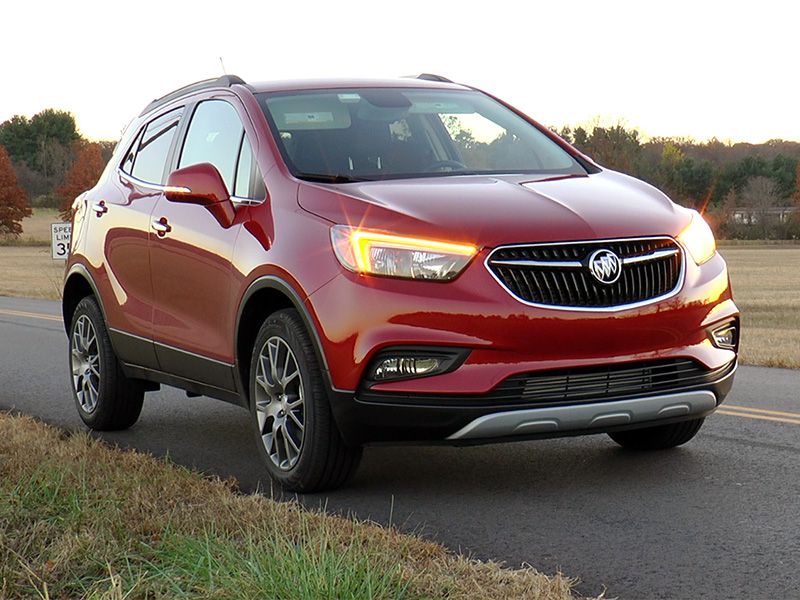
Photo by Dan Gray
Trim Levels
The 2017 Buick Encore is offered in six trim levels: Base ($22,990), Preferred ($24,365), Sport Touring ($25,565), Preferred II ($26,865), Essence ($29,065), and Premium ($30,465). The 2017’s base price has dropped from $24,065 in 2016. The top-of-the-line Premium model delivers all the advanced safety features as standard equipment, along with a host of amenities that include Rainsense windshield wipers, a Bose audio system, memory seats, a heated steering wheel, and leather upholstery with heated front bucket seats. We tested an Encore Sport Touring in Winterberry Red Metallic ($395) with an ebony interior. The Sport Touring model differs from the flock with a winged rear spoiler, fog lamps, and Midnight Silver 18-inch alloy wheels.
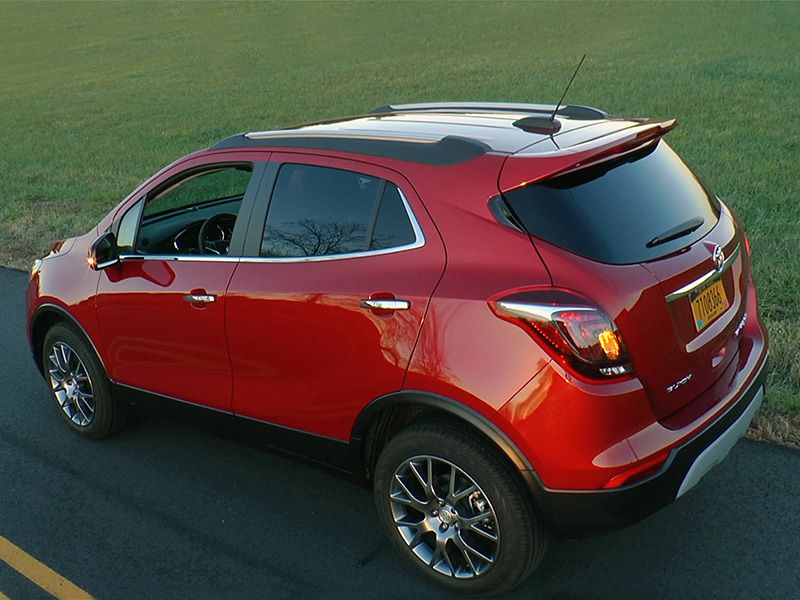
Photo by Dan Gray
Powertrain
There are two engine choices, with similar displacements. The base port fuel injected 1.4-liter turbocharged 4-cylinder engine is rated at 138 horsepower and 148-pound feet of torque. Our tester was equipped with the optional spark ignition direct injected 1.4-liter turbo offering 153 horsepower and 177-pound feet of torque. The standard 1.4-liter engine uses a cast-iron block with a 1364cc displacement and a 9.5:1 compression ratio, while the optional 1.4-liteer engine uses a slightly larger and lighter 1399cc cast aluminum block with a 10.5:1 compression ratio. Both engines are mated to a conventional 6-speed automatic transmission. A manual transmission is not offered. The optional engine is only offered in the higher trim levels and includes stop-start technology to save fuel in stop-and-go traffic. While the stop-start system operated flawlessly in our testing, it can be disconcerting if you’re not expecting the engine to shut off at a traffic light. The Encore is offered in front-wheel and all-wheel drive.
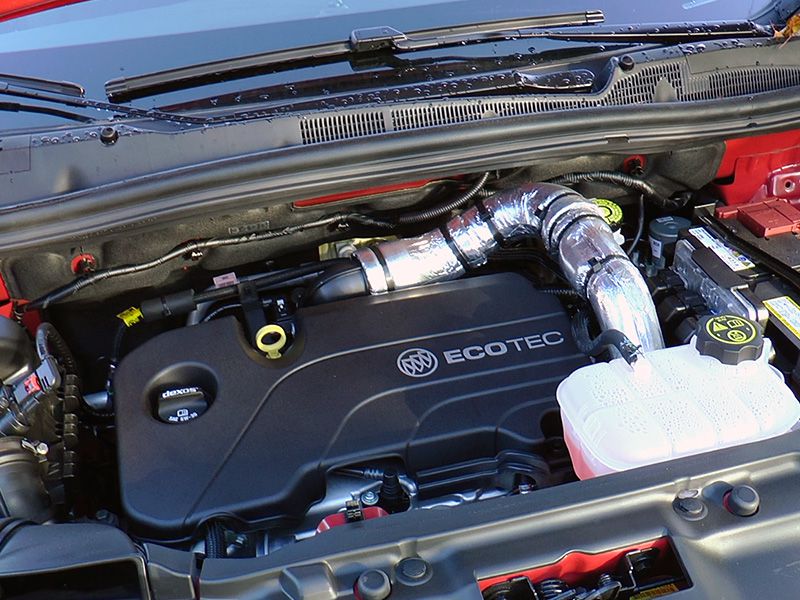
Photo by Dan Gray
Fuel Economy and Performance
The all-wheel drive Encore is EPA rated at 23 city/30 highway with the standard 1.4-liter turbo and 26 city/31 highway with the optional engine. The front-wheel drive Encore is rated at 25/30 with the standard engine and 27/33 with the optional engine. By comparison, the EPA rates the FWD Mazda CX-3 and Honda HR-V slightly higher, at 29/34 and 28/34, respectively. Are the optional engine’s additional power and better fuel economy worth the extra $895? You’ll need to drive them back-to-back to make the decision. While the optional engine is responsive, it’s no speed demon. Expect a 0-60 time in the 8-second range. Unlike many turbocharged vehicles, the Encore is engineered to run on regular unleaded gasoline and the 14-gallon fuel tank provides a reasonable amount of highway driving range.
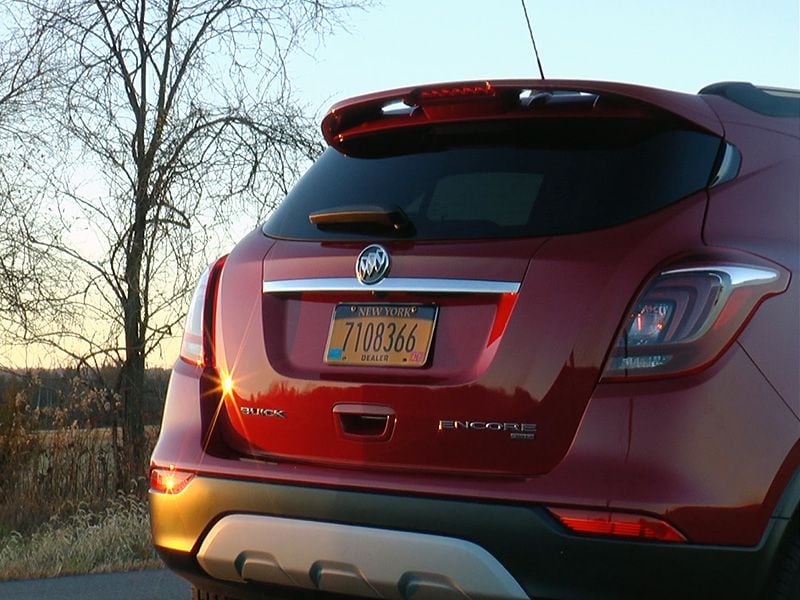
Photo by Dan Gray
Safety Technology
The Insurance Institute for Highway Safety (IIHS) rated the 2016 Encore a Top Safety Pick, with good scores in all the crashworthiness tests, a basic rating for front crash prevention, and a poor rating for headlights. With the changes in the 2017 model, ratings should improve in those two key areas. Ten airbags and a rear vision camera are standard in all 2017 Encores. Our Sport Touring tester was equipped with the optional safety package ($495), which includes rear cross-traffic alert and blind spot mirrors. These features are standard on the higher trim levels. The Premium trim level delivers the full gamut of safety technology, with Forward Collision Alert, Front and Rear Park Assist, blind spot mirrors, and Lane Departure Warning as standard equipment.
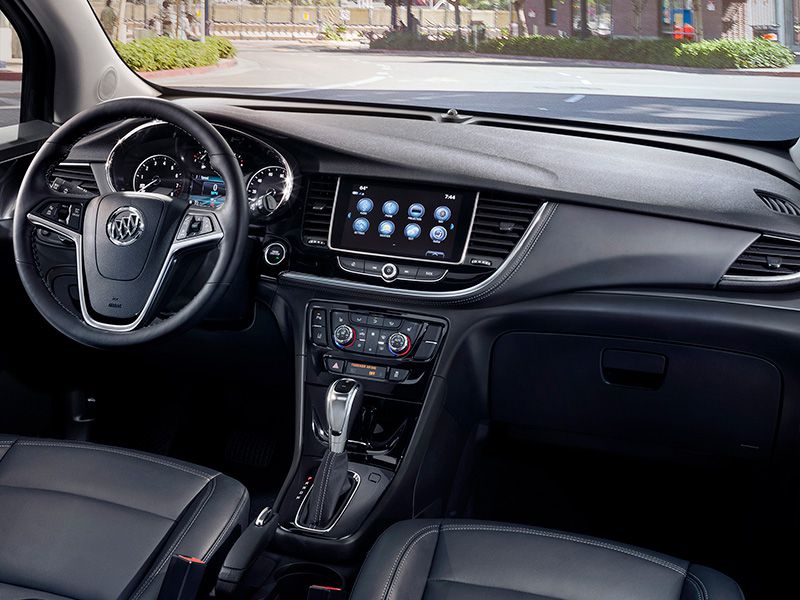
Photo by General Motors
Interior
The 2017 Encore’s interior takes a significant step up from the previous model, with a new swept dashboard design that features higher-quality soft touch materials and a vastly improved 8-inch infotainment display. The instrument panel has been completely redesigned, as well, replacing the previous version’s lackluster unit. Push-button start is standard, along with keyless entry. The Sport Touring trim level is fitted with a handsome upholstery scheme and includes a 6-way power driver's seat. Upgrading to the Essence or Premium trim levels gains heated and leather appointed front bucket seats, with 6-way power adjustment in the passenger seat, along with a heated steering wheel. The back seat provides approximately 38.8 inches of legroom, 35.7 inches of legroom, and 52.5 inches of shoulder room.
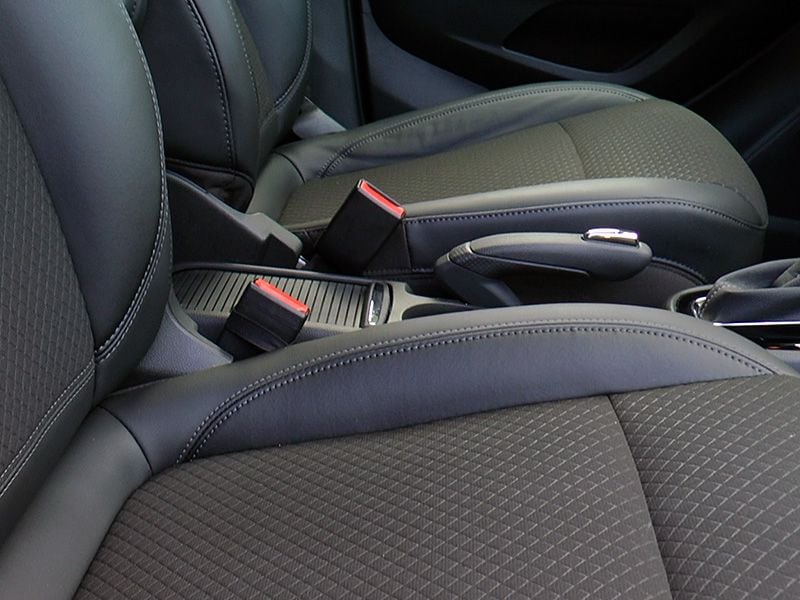
Photo by Dan Gray
Infotainment
Infotainment and connectivity options take a big step up over the previous model, with a completely revamped head unit. Our Sport Touring Tester was equipped with the optional 7-speaker Bose audio system ($595), 8-inch Intellilink navigation system ($495), and dual-zone HVAC system ($275). The Intellilink infotainment system supports Apple CarPlay and Android Auto. A 4G LTE Wi-Fi hotspot with a limited data trial, a 3-month SiriusXM satellite radio trial subscription and a 5-year basic GM OnStar subscription plan are standard, along with a 6-month guidance subscription. The 4G Wi-Fi hotspot allows up to seven devices to be connected to the system. There’s one USB input port and a 12-volt outlet in a compartment at the base of the dash. Higher trim levels include a 120-volt outlet, which is located at the back of the center console. The Bose system is standard on the Premium trim level.
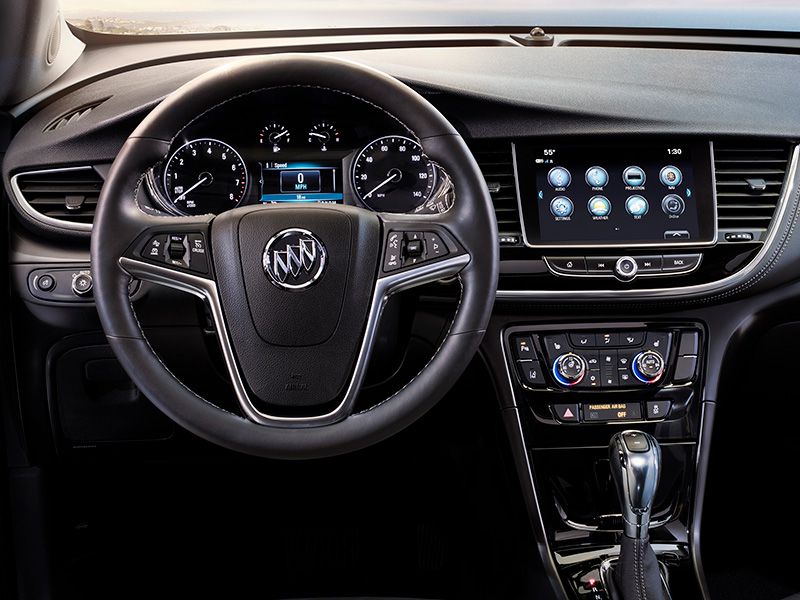
Photo by General Motors
Driving Impressions
The Encore is well suited for in-town driving. The ride height allows for good visibility and the short wheelbase makes it easy to maneuver and park. That said, the Encore does feel a bit tall and short out on the open road. While short wheelbase crossovers are not as smooth as their lengthier siblings over uneven road surfaces, the Encore is well behaved and the cabin is wonderfully quiet, with Bose Active Noise Cancellation technology masking road noise. If you’re aiming for a more sporty ride, you’ll likely consider the Mazda CX-3, FIAT 500X, and Nissan Juke. If all-wheel drive capability is a priority, the Subaru Crosstrek and Jeep Renegade Trailhawk should be at the top of your list.
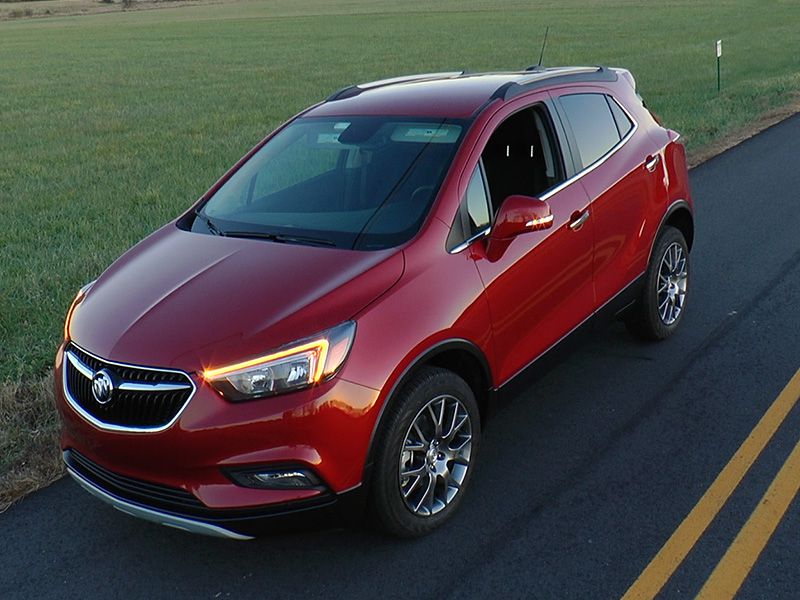
Photo by Dan Gray
Cargo
The Encore provides 18.8 cubic feet of storage area behind the 60/40 split second-row seats. The second-row seat bottoms fold forward to allow the seat backs to fold flat, providing a total of 48.4 cubic feet of storage. This slots in slightly behind the Jeep Renegade and Subaru Crosstrek. The Honda HR-V provides significantly more cargo space; the Nissan Juke, significantly less. All Encore are equipped with a flat-folding front passenger seat back to accommodate lengthy cargo. There are convenient cubbies on the sides of the cargo area, the temporary spare is mounted below the floor, and a cargo area cover is included. The Encore lacks a 12-volt outlet in the cargo area.
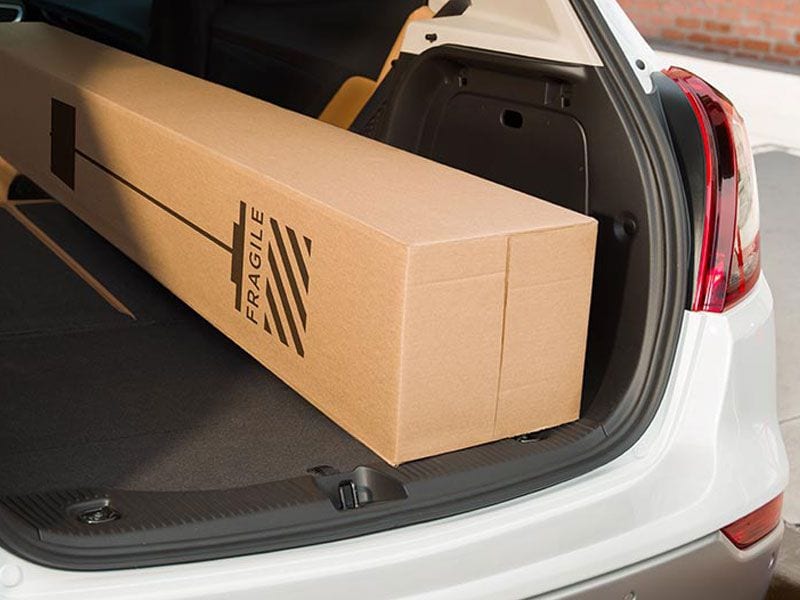
Photo by General Motors
The Encore is well-positioned as an entry-level luxury subcompact crossover, but it doesn’t encroach on the higher end imports. While not in the same class an Audi Q3 or BMW X1, the Encore’s redesigned interior and exterior are crisp and elegant. It’s an easy little critter to live with overall, although it’s not as efficient as one might expect, given the size. Blame it on physics. When it comes to fuel economy, small crossovers are held back by aerodynamics. Short, stubby vehicles are at a disadvantage, but all the answers will not be found in the wind tunnel. A torquey and fuel-efficient turbodiesel engine would be most welcome under the Encore’s hood (and is currently offered in the Opel and Vauxhaul Mokka overseas, with spectacular ratings), but the ultimate answer will likely be found in the Chevrolet Bolt’s fully electric drivetrain technology. While the new administration in Washington is taking a perilous turn back towards fossil fuels, the world is marching forward with a low carbon agenda and the Encore/Trax/Mokka is a global vehicle. A fully electric subcompact crossover will be well recieved, worldwide.
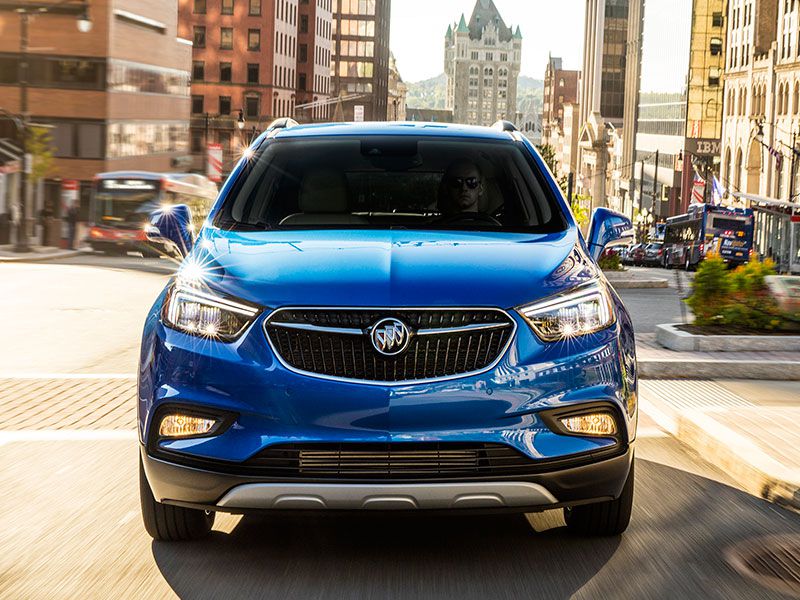
Photo by General Motors